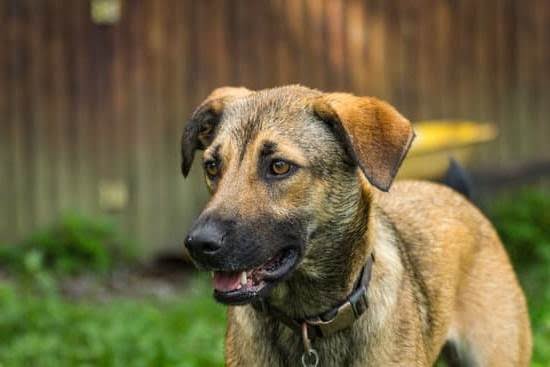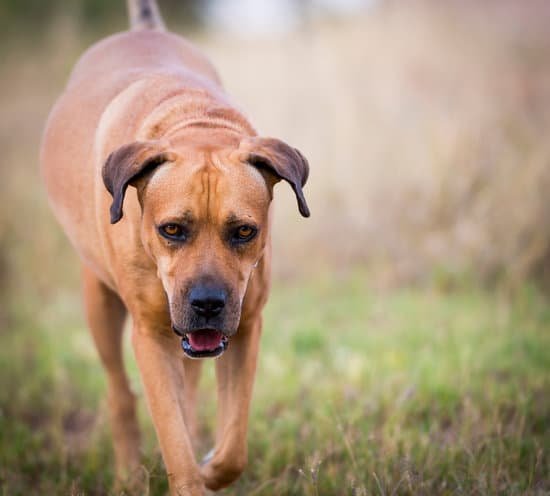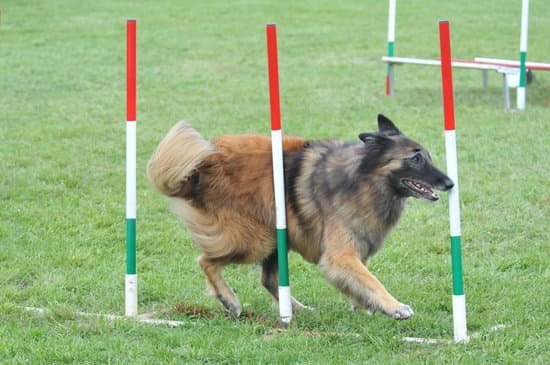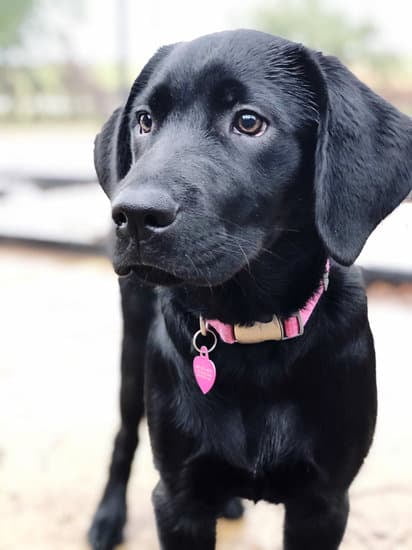Introduction
House training is the process of teaching an older dog how to eliminate outside rather than inside the house. It is a crucial part of obedience and is often considered one of the most important things a pet parent can do for their pup. House training an older dog without a crate offers a few specific challenges, as seniors sometimes have less control over their bladder and bowels due to age-related issues. To successfully house train an older dog, it requires consistency, patience, and plenty of positive reinforcement.
Potty Training: Seasoned Dogs may Require Warm Up Sessions
Potty training an older dog without the use of a crate typically entails setting up regular potty breaks throughout the day. Since senior dogs are more likely to struggle with control issues, this frequent trips outside may require “warm up sessions” before being able to do its business in an appropriate area—carefully observing what actions your dog does when taken outside can give you cues as to when it needs to go. Scheduling potty breaks in line with your pet’s routine will help establish regular habits that can be adapted accordingly so they know when it’s time and where they should go when they need to eliminate.
Reinforce Good Behaviour: Give Lots of Praise
It’s important to reward your pup each time they listen and go outdoors to relieve themselves in the proper location—this will reinforce good behaviour in them, making them want to reproduce it given that it comes with treats or words of affirmation each time. When punishing bad behaviour during potty-training exercises, ensure you avoid physical punishment or scolding; rather opt for providing reminders with potential verbal cues that include phrases such as “outside!” or “go potty!” In addition to rewarding good behaviour through treats, verbal praise should also be included whenever your pooch succeeds too; saying phrases such as “good job!” or “good boy/girl!” are known to motivate any pup of any age—so get excited and show lots of love post successful trips outdoors!
Establishing a Potty Routine
When house-training an older dog without a crate, it is important to establish a potty routine as soon as possible. Setting regular schedules and taking the pup out for regular potty breaks will help him learn faster and prevent accidents in the home. Generally, your dog should be able to hold his bladder up to six hours during sleep, but any longer than this can result in accidents inside. You may first want to consider setting 4-hour intervals between potty breaks in the beginning. As your dog progresses, increase the duration of time between bathroom visits gradually until you find a comfortable amount of time for him to wait. During these potty sessions, take him outside to the same area each time so that he becomes familiar with where you expect him to go and remembers it for future use. Do not forget reward your pet with praise or small treats whenever he goes in the correct place; this will encourage positive behavior and potty training success!
Developing Appropriate Indoor Potty Areas
If you do not want to use a crate for potty training your older dog, it is important to set up designated areas in the home where your pet can go. Taking into account their age and size, decide what space you’re able to provide them with. If possible, create two different designated potty spots: one outdoor and one indoor. Depending on the breed of dog and your climate, an outdoor potty area may or may not be necessary; if so, it should consist of grassy area or patches within your yard that are easily accessible to your pup. Training should take place both during the day as well as at night. This allows them to understand which areas are appropriate for potty breaks and which are not.
The next step is figuring out where you will locate their litter box indoors. It is best to find an area that is easy for your pup to access while still keeping the surrounding area clean; a corner or small room in the house are both good options. Consider using puppy pads if you have hardwood floors in order to prevent any mess from getting out—but regardless of floor material, make sure you frequently sanitize/mop/sweep all affected areas as much as possible! Additionally, be mindful of wind drafts that might cause accidents near entrances or windows; this could lead to avoidable disasters!
Implementing Time-Out Zones for Problem Behaviors
House training an older dog without a crate can be a difficult task. It requires patience, understanding, and dedication in order to make sure that your dog will become eventually house trained. One of the most effective strategies is to implement time-out zones for problem behaviors while also utilizing positive reinforcement to discourage bad potty habits.
When setting up time-out zones, it’s important to have a few designated spots in your home where the dog should not be during times when accidents are likely to happen, such as when you’re away or at night. Place the dog in these spot whenever they start displaying inappropriate potty behavior. Do not scold them or reprimand them; instead, calmly express disappointment and proceed with placing them in the zone. Once they’ve been there for some time and continue exhibiting appropriate behavior afterwards, reward them with praise or treats.
Besides implementing time-out zones, it’s equally important to actively train your pet out of the bad habit by rewarding good potty behavior with treats or other incentives when your pup pees outside of their designated indoor areas throughout the house. When you catch him urinating outdoors consistently and reliably, reinforce his progress with more treats of increasing values so he knows that his efforts are being acknowledged and appreciated! Just like you wouldn’t want to perform badly in work without getting any recognition from boss; your pup too needs reward from you for doing well!
Utilizing Visual and Audio Reprimands and Praises
House training an older dog without the use of a crate can be difficult but is an achievable task. To successfully house train your pup, you will need to develop strategies that use both visual and audio reprimands and praises. Start by setting up consistent places for the pup to visit each time he needs to go potty, like outside grass or gravel pads. Don’t forget to supervise your pup at all times during training so that you can reward good behavior as soon as it occurs.
To start, use visual cues every time you bring your pup outside such as clapping your hands or speaking in a higher-pitched voice. This helps let your dog know it’s time to go potty and encourages him to associate going outside with a pleasant experience. If your fur baby accidentally goes inside, try using an audible sound like a clap or whistle while simultaneously stepping onto his front paws causing him to stop mid-pee. Doing this consistently will help reinforce the idea that going potty inside is not acceptable and the behavior should not be repeated in the future.
Once outside, offer rewards for good behavior whenever he does his business in the correct location like a quick scratch behind the ears or rubbing his chin accompanied by verbal praise (like “good boy!”). Be sure to make these rewards consistent so that your pup begins to recognize them and is motivated to go again in order to receive said rewards! With patience and consistency, house training an older dog without a crate can be achieved!
Offering Rewards for Successful Potty Training
Rewarding your older dog for successful potty training is a key element to the process. Treats should be given immediately after having gone potty in the designated area (outside). Praises should also be offered simultaneously as positive reinforcement – both verbally and physically through petting. Allow him or her to know that what they are doing is exactly what you want them to do which will greatly increase the effectiveness of the house training process. Keeping treats on hand when taking your pup outside will further enhance their potty success. For example, if they usually stay in one spot until after they go, consider offering a treat right before they can expect to relieve themselves. Offering an extra incentive may help make sure “business” is completed before coming back indoors. It may be possible to teach your pup to come back indoors without rewarding them – especially with larger dogs that have years of experience with commands such as stay, come, sit etc. This system essentially teaches your pup not only how to go outside but also how when it’s time to come back inside – acting as a trigger for knowing that business has been taken care of outdoors and it’s now safe/okay for them to come inside. When done consistently, this method can pay off nicely and can be used for other important commands in the future!
Establishing Ground Rules
The key to successfully house training an older dog without a crate is establishing and maintaining consistency. Make sure you set specific ground rules that all people in the home need to adhere to, such as not allowing any food or water within your pet’s reach, picking up all of your pet’s messes immediately, and not allow them to roam around freely. This will help ensure that your dog understands that you are the one setting the rules and enforcing them.
It is also important to create a regular schedule for potty breaks for your older dog. This could be once in the morning, once in the evening, and then regularly throughout the day if needed. When it’s time for potty breaks, take your dog outside to the same area each time and provide positive reinforcement when they use the bathroom outside as opposed inside. Offer them praise as soon as they do their business outside and reinforce this behavior publicly every time. Additionally, make sure that you always remain patient with teaching your dog these new commands; training an older dog can often take slightly longer than a younger pup but remember it will pay off with continued consistency and commitment!
Conclusion
Training an older dog without a crate can be challenging, but it is possible. With consistency and patience, you have the chance to build a strong relationship between your pup and yourself that will last for years to come. Start by creating designated potty spots outside and use positive reinforcement techniques along with regular feeding times to establish the correct routines for your pup. Also set clear boundaries and provide alternative ways of occupying your doggy’s time instead of using the crate. With consistent effort from both you and your canine companion, there is no doubt that eventually you will achieve triumph in house training your older dog without a crate!

Welcome to the blog! I am a professional dog trainer and have been working with dogs for many years. In this blog, I will be discussing various topics related to dog training, including tips, tricks, and advice. I hope you find this information helpful and informative. Thanks for reading!





